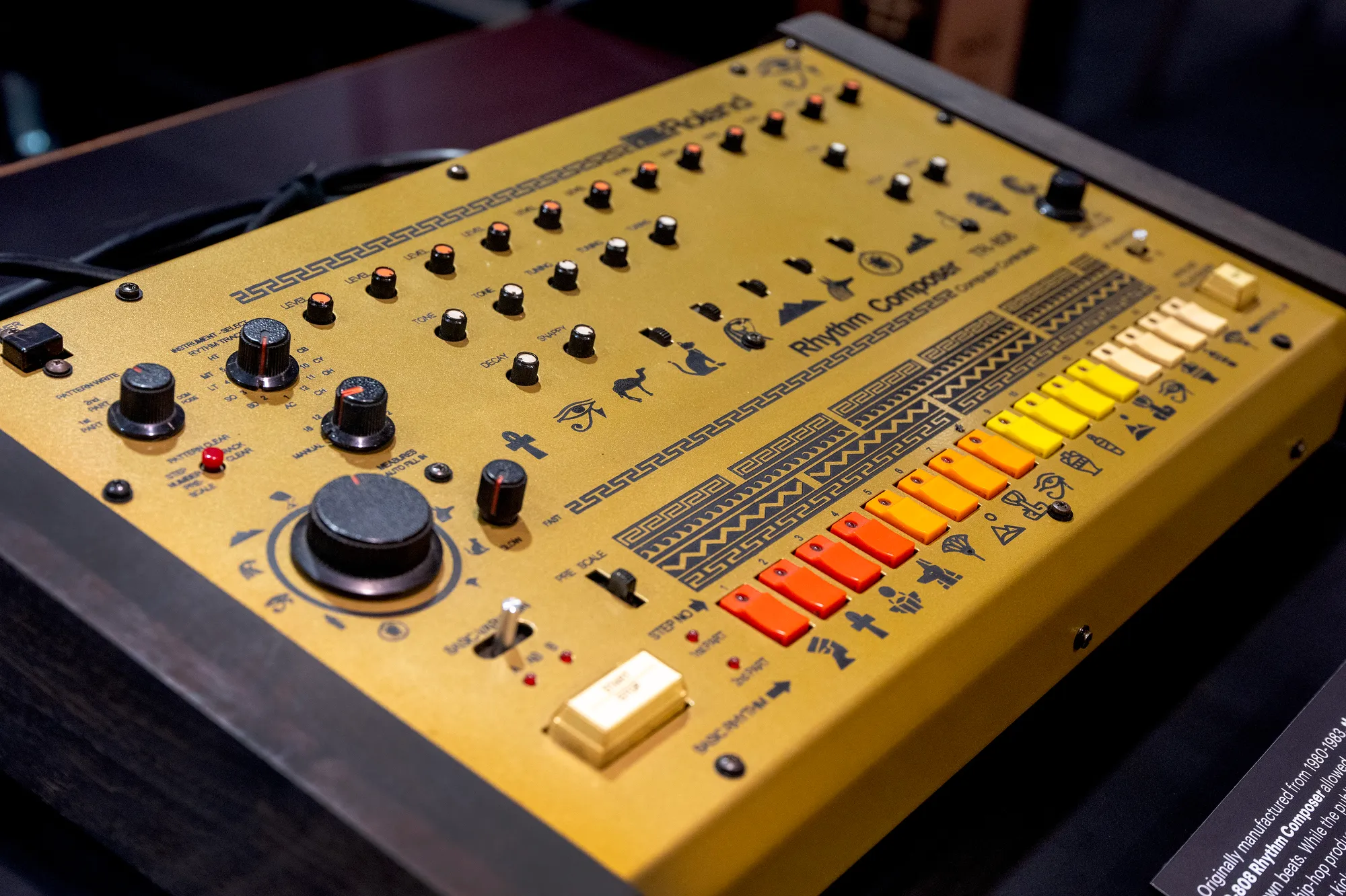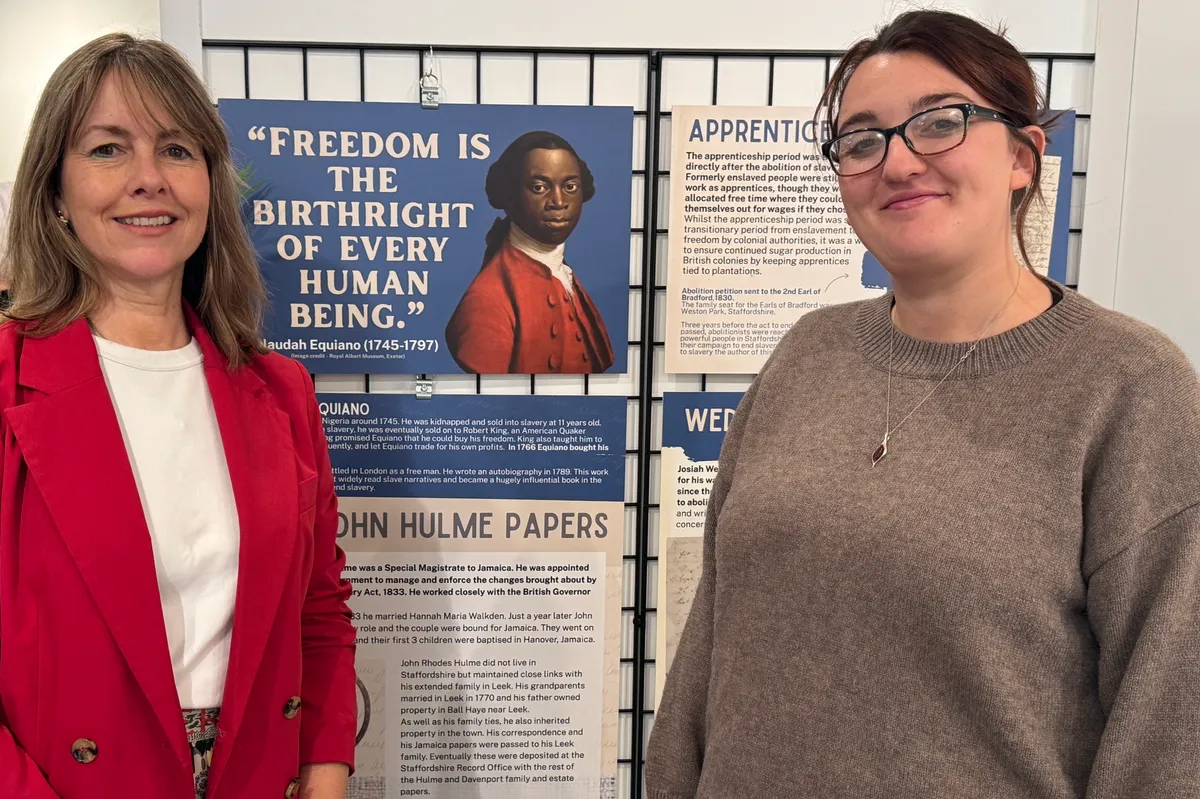Copyright The Austin Chronicle

Hip-hop is officially middle-aged, but its mortality is hardly in question. Half a century after the genre’s birth, the GRAMMY Museum celebrated the lovechild of funk and DJ culture with an expansive exhibit at its Los Angeles home base. Now, the Recording Academy is keeping the party going, sending the collection out on the road. Until Jan. 4, poignant artifacts of hip-hop’s cultural influence on music, fashion, dance, street art, and activism are on display at the LBJ Presidential Library. Walking through the display starts as it should: with sound. L.A. dance pioneer Egyptian Lover’s original Roland TR-808 drum machine, adorned with his customized hieroglyphics, is the first thing you see upon entry. The tremble of an 808 beat has been recorded, re-digitized, and reused so many times that it’s a household name. If you haven’t heard of it, you’ve certainly heard its bass-blending, boombox-quaking sound in hip-hop songs and beyond. Still, as my tour guide points out, many people have never been face-to-face with the machine behind the sound. Introducing audiences to the material culture behind sounds and trends is the name of the game for this exhibit. As you step further into hip-hop’s history, you’ll brush up on its great coastal feud and the early record labels started by Dr. Dre and Jay-Z. Nearby, the young genre’s interminable struggle against the music industry’s maligned treatment of their artwork peeks through in notes on Wu-Tang Clan’s label-lassoing power moves. Further in, an essay by Tupac and Chuck D’s handwritten lyrics to Public Enemy’s “Fight the Power” pull the scope back, reminding audiences that hip-hop was born of resistance to racism and bigotry everywhere. Among the musical artifacts, influential fashion pieces serve as colorful reminders of beloved music videos and GRAMMY performances. Most strikingly, custom designer suits worn by Biggie Smalls and Tupac in music videos stand side-by-side. My tour guides tell me their position is at the request of the rappers’ respective families – whatever that means for their families’ retrospective feelings on their rivalry. “By hosting Hip-Hop [America]: The Mixtape Exhibit, the LBJ Presidential Library is opening our doors to wider audiences and celebrating the power of music as history,” writes Lara Hall, head museum curator at the LBJ Presidential Library, in a press release. “This exhibit helps us connect with new communities and share stories that reflect the breadth of the American experience.” In many ways, connecting and sharing is what hip-hop, and the many subgenres that have spun off of it, is all about. The exhibit links sound to object, ideas to artwork, album covers and music videos to the cars and clothing that cemented them in cultural memory. The GRAMMY Museum’s chief curator and VP of curatorial affairs, Jasen Emmons, and his team came to explore hip-hop regionality by necessity – place has always played a huge role in the artists’ identities and lyrics – and, almost, by accident. Faced with incorporating a giant map of the United States in the exhibit’s original L.A. location, the GRAMMY Museum curators were inspired to tackle hip-hop’s locale-specific sounds. “One of our advisors, Davey D, said something during a meeting one time that always stayed with me, which was: ‘Acknowledging people in a scene is as important as artifacts,’” Emmons says. Consequently, a digital map on display at LBJ contains a list of acts broken down by region, contributed to by industry insiders and exhibit visitors across the nation. Austin may not have a scene historic enough to be on the map (yet!), but clicking through Houston’s list – or wherever your second home city may be – it’s easy to get swept up in the mixture of pride and curiosity that underlies this exhibit as a whole. Whether you’re a beatboxing pro or a rhyme and rhythm novice, you’ll find something to appreciate in this lowrider nostalgia cruise through five decades of beat-breaking cultural flow. “[Hip-hop] has somehow been a form that’s allowed a lot of flexibility, and it’s built all this other culture around it that has continued to resonate with people,” says Emmons. “For us, as part of the Recording Academy, it was really important to try and tell the story in a broad, multifaceted way and try to reflect how important it is,” Emmons says. “[Hip-hop] is not only not going away, it’s continuing to have this incredible vitality.” This article appears in October 24 • 2025.



